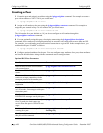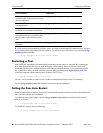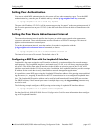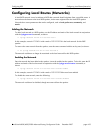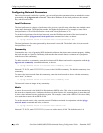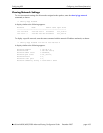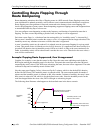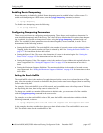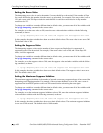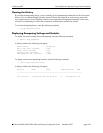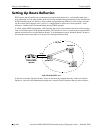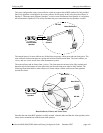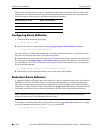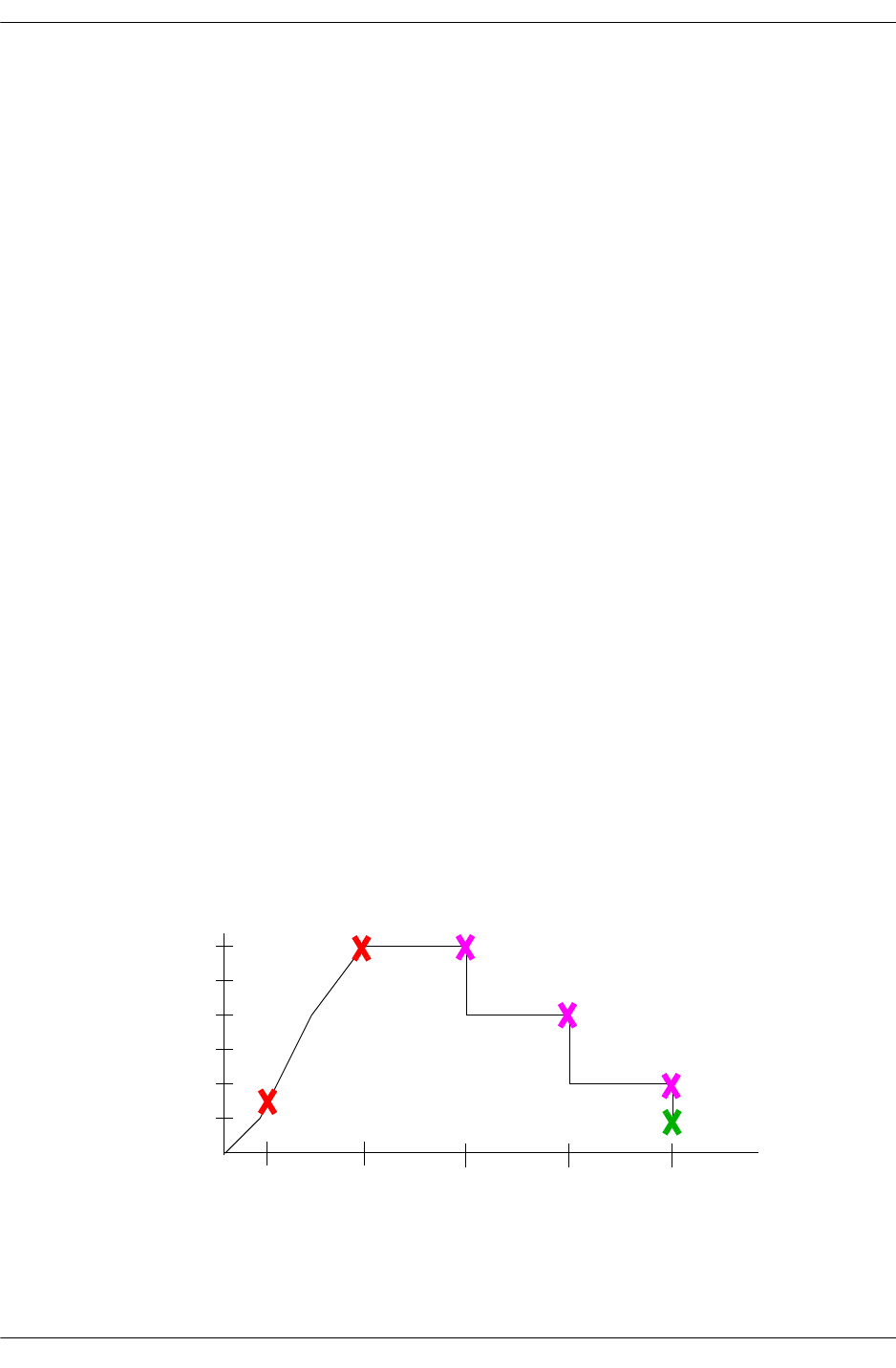
Controlling Route Flapping Through Route Dampening Configuring BGP
page 4-36 OmniSwitch 6800/6850/9000 Advanced Routing Configuration Guide December 2007
Controlling Route Flapping Through
Route Dampening
Route dampening minimizes the effect of flapping routes in a BGP network. Route flapping occurs when
route information is updated erratically, such as when a route is announced and withdrawn at a rapid rate.
Route flapping can cause problems in networks connected to the Internet, where route flapping will
involve the propagation of many routes. Route dampening suppresses flapping routes and designates them
as unreachable until they flap at a lower rate.
You can configure route dampening to adapt to the frequency and duration of a particular route that is
flapping. The more a route flaps during a period of time, the longer it will be suppressed.
Each time a route flaps (i.e., withdrawn from the routing table), its “instability metric” is increased by 1.
Once a route’s instability metric reaches the suppress value, it is suppressed and no longer advertised. The
instability metric may continue to increase even after the route is suppressed.
A route’s instability metric may be reduced. It is reduced once the route stops flapping for a given period
of time. This period of time is referred to as the half-life duration. If a suppressed route does not flap for a
given half-life duration, then its instability metric will be cut in half. As long as the route continues to be
stable, its instability metric will be reduced until it reaches the reuse value. Once below the reuse value, a
route will be re-advertised.
Example: Flapping Route Suppressed, then Unsuppressed
Consider, for example, a route that has started to flap. Once this route starts exhibiting erratic behavior,
BGP begins tracking the instability metric for the route. This particular route flaps more than 300 times,
surpassing the cutoff value of 300. BGP stops advertising the route; the route is now suppressed. The route
continues to flap and its instability metric reaches 1600.
Now the route stops flapping. In fact, it does not flap for 5 minutes, which is also the half-life duration
defined for BGP routes. The instability metric is reduced to 800. The route remains stable for another 5
minutes and the instability metric is reduced to 400. After another 5 minutes of stability, the route’s insta-
bility metric is reduced to 200, which is also the defined reuse value. Since the instability metric for the
route has dropped below the reuse value, BGP will begin re-advertising it again.
The following chart illustrates what happens to the described route in the above scenario:
Instability
metric
200
400
600
800
1600
Time
Route Suppressed
Half-life duration exceeded.
Instability metric halved.
Instability metric cut in
half two more times.
Instability metric hits reuse
value. Route unsuppressed.
510152025



